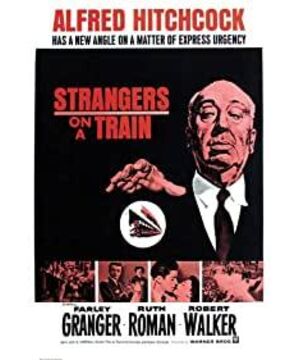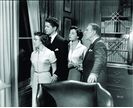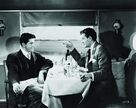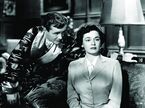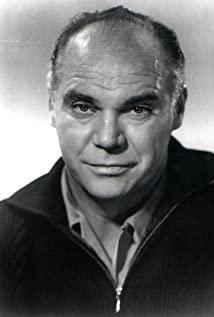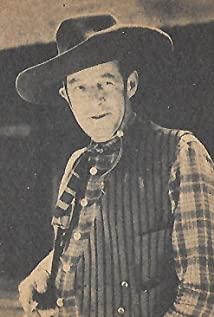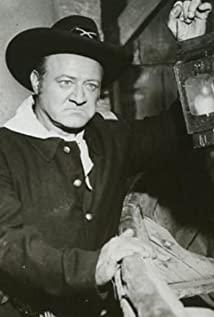To a certain extent, Hitchcock has always been committed to fascinating the audience rather than manipulating it, and reveals its own charm as the plot progresses-in "The Birds" is a metamorphic interpretation of the alienation of human nature in extreme situations, while in this film it is Two-way murder of order and rebellion.
1. The self-consistent and rebellious order "Order" is the first step of Hitchcock's charm technique, and it is also the eternal theme in his creative process. If it is said that the spatial order derived from the arrangement of sceneries and the regular movement of the lens is the fundamental technique passed down by Hollywood for a century, then Hitchcock is undoubtedly a refinement of tradition. His early experience of filming his debut film in Germany brought Hitchcock into contact with the film technique of "German Expressionism", and the inheritance of the expressionist technique raised his technique to an aesthetic level. The most frequently used composition technique in this film is the composition technique of light/shadow. For example, whenever Guy and Bruno are at opposite angles, the high degree of rigor in lighting forces Bruno to stay in the dark. The opposite is Guy always. Standing in the sun/light convergence is naturally a counterpoint to his personality attributes. The use of light can be traced back to "the tenant" (1927). But in comparison, what has almost taken a leap is the scheduling of outdoor scenes. In indoor scenes, the combination of scenery and angled lenses can be used to easily capture order, but when it comes to outdoor scenes, Hitchcock's filming ideas are completely transformed. Take the two tennis match fragments, in the first paragraph, the audience shaking their heads in the direction of the tennis movement can be regarded as a kind of artificial order, while Bruno's direct stare/gaze gesture is a complete rebellion of order, a kind of symbol. The fear of crime and murder is magnified and broken; and in the second paragraph of the minutes-long tennis match, Hitchcock used a large number of medium and close shots to shoot Guy’s sports state, and the sense of oppression was not caused by the so-called back shot. , But the visual impact of the "upward" gravitational force and constantly changing posture of its motion state itself. A few shots of the opponent's play showed a rare large-vision combination, and the huge tension of the composition forced the audience to oppress the image in just a few moments. It would be even more perfect if it could invoke the tone/speed of the narrator to stimulate the amazing magic of the "tennis court" space. Of course, the paragraph connected to Bruno reaching out into the sewer to pick up the lighter through parallel editing is the complete back of the former ideology. Bruno's action calls for a kind of "downward" gravity and the falling posture can be regarded as the opposite of Guy, and it is true. . Second, the layout of suspense and advance suspense, or Hitchcock said of " Mai Gefen"It is the eternal narrative driving force in his works. Usually, the directors let the protagonist push the protagonist to the realm inaccessible in daily life through accidental events, and keep the manipulator behind the accidental event in the climax of the film to expose (or defeat) the truth. But in this film, the first paragraph is the acquaintance between Guy and Bruno. In other words, the film reveals the final suspense in the genre to the audience from the very beginning. As a result, the suspense of the film changed from "Who is Guy's murderer of his wife" to "How Guy defeated the murderer", and the change in writing direction finally formed a complete change of the suspense setting. In text writing, suspense is naturally all the driving force for plot development and narrative flow, but the application of suspense in specific paragraphs will test the drama more. Thanks to Chandler’s solid writing ability, the suspense in each paragraph is well set , And what Hitchcock needs to do is how to make every little suspense and the big suspense that make up the film perfect. So we can see that when Bruno threatened Guy with a gun, he did not shoot because he did not want to wake his mother, and when Bruno left for the amusement park because an accidental lighter fell into the sewer, the timing was delayed, etc. Hitchcock was all in the bridge section. With a foolish frivolous gesture, he constantly and continuously hits the audience's psychology. In the final stage of the amusement park melee, the frantic image of Guy and Bruno fighting on the out of control carousel is the climax of suspense advancement and the final step in its suspense layout. However, the suspense of the lighter at the end is too superficial, or the director has fooled the audience's psychological mechanism. Third, the twins and rebellious attitude stands for different opinions to discuss the relationship between Guy and Bruno, are two of the most respected - sex with twins. I don't agree with the existence of the so-called homosexual complex in this film, but Bruno's Oedipus complex has almost been confirmed. Hitchcock completely exposed the personality attributes of the two from the beginning of the film. If Guy is regarded as a subordinate of the social order, then Bruno symbolizes the psychology behind Guy’s personality. The aggressive temperament and opposition carried by his rebellious posture The obsession with murder is almost the charm throughout the film. The flower of evil that grows in the dark is a rebellion and abandonment of order. At the same time, the murder symbolizes the impulsive/arrogant side of Guy’s personality. The two are intertwined. Will trigger the greatest emotional tension. Even better, we might as well take Bruno out of the limitations of film noir, and regard this film as a modernized metamorphosis of the " Oedipus tragedy ", and its deep-rooted psychology of alienation is enough to lift it to the level of world film history. Perhaps you can appreciate the great transformation of Bruno's evil standing posture. Despite being invaded by the entertainment attributes of the era of big studios, "The Train Stranger" can still be regarded as an extremely clever fable film and suspense template, standing forever.
View more about Strangers on a Train reviews


